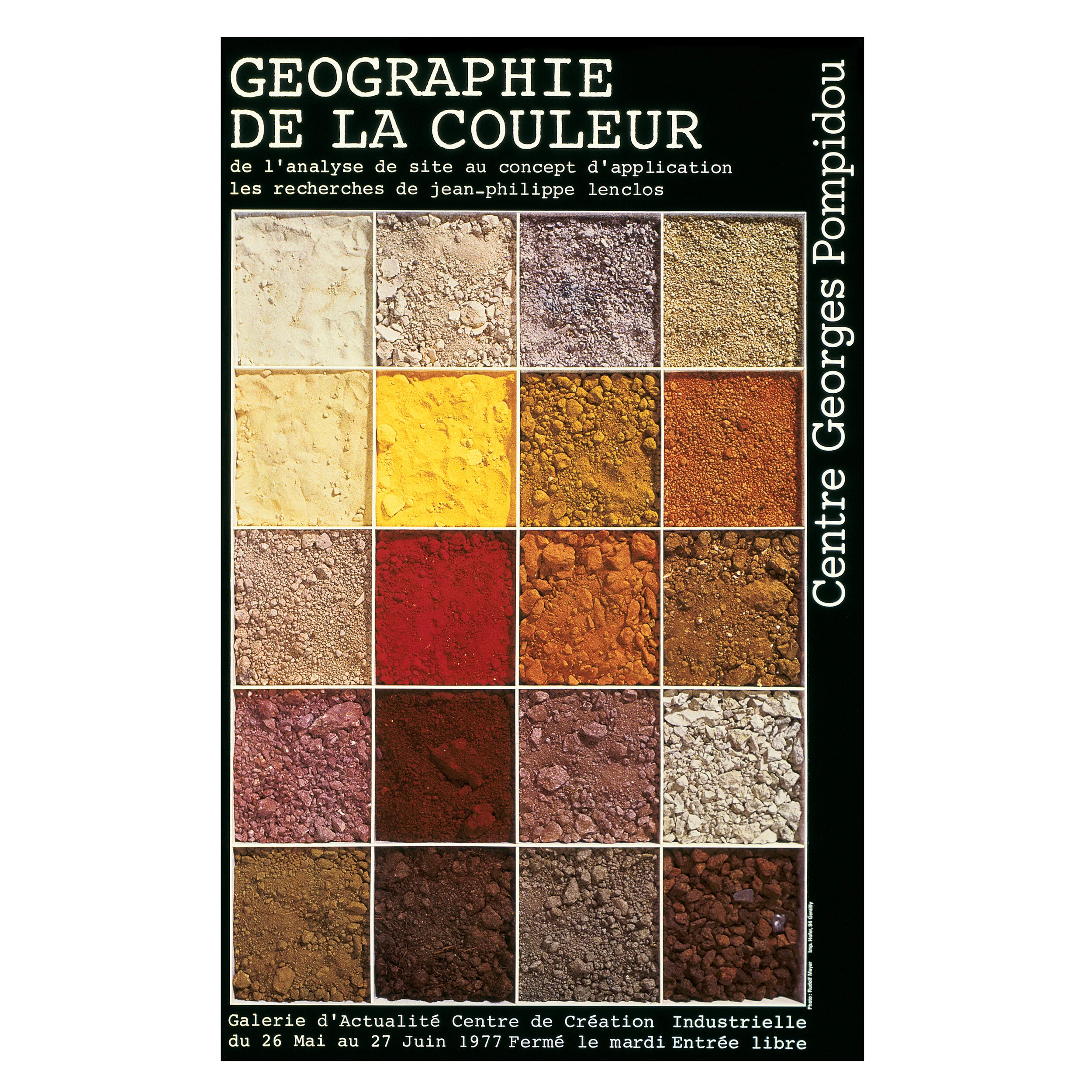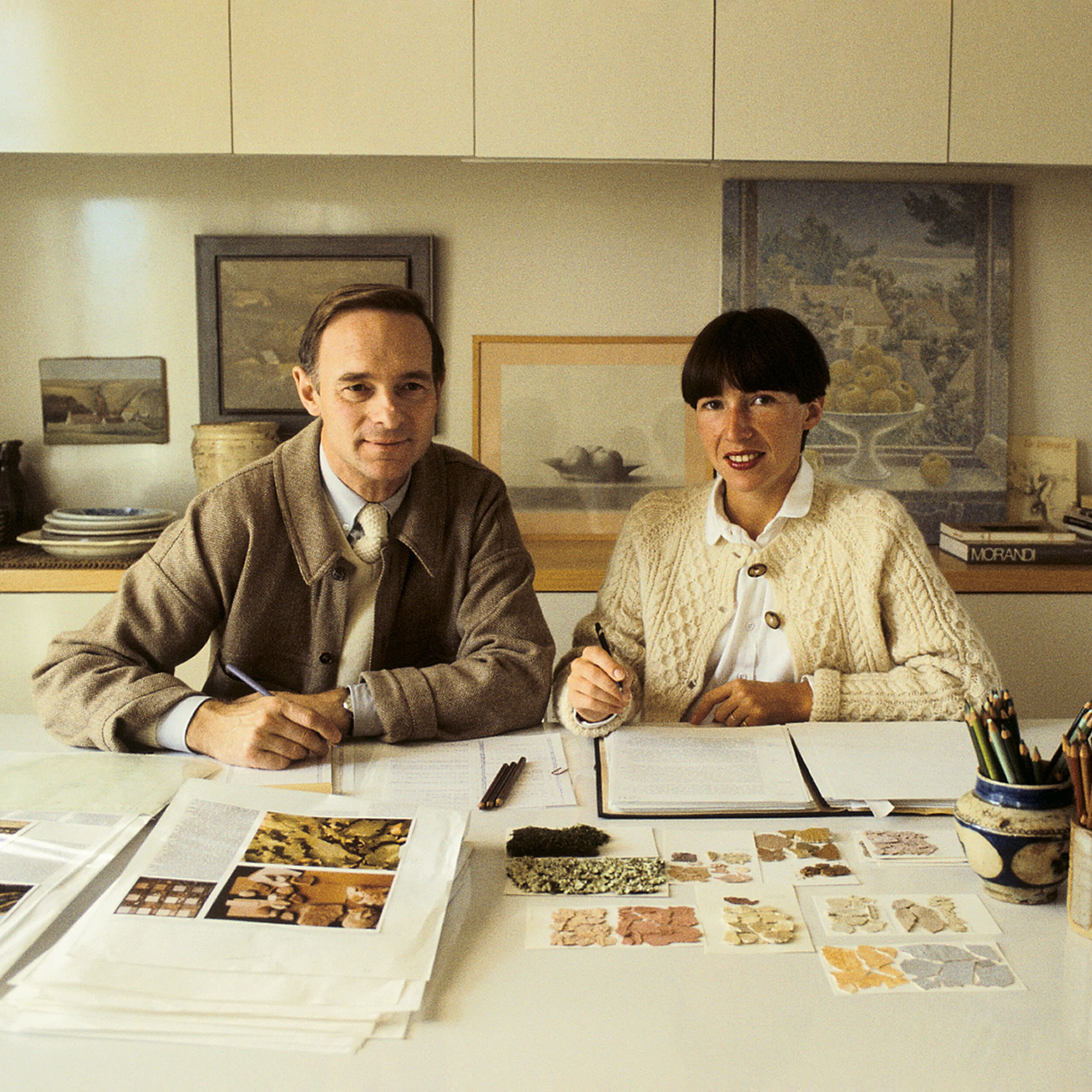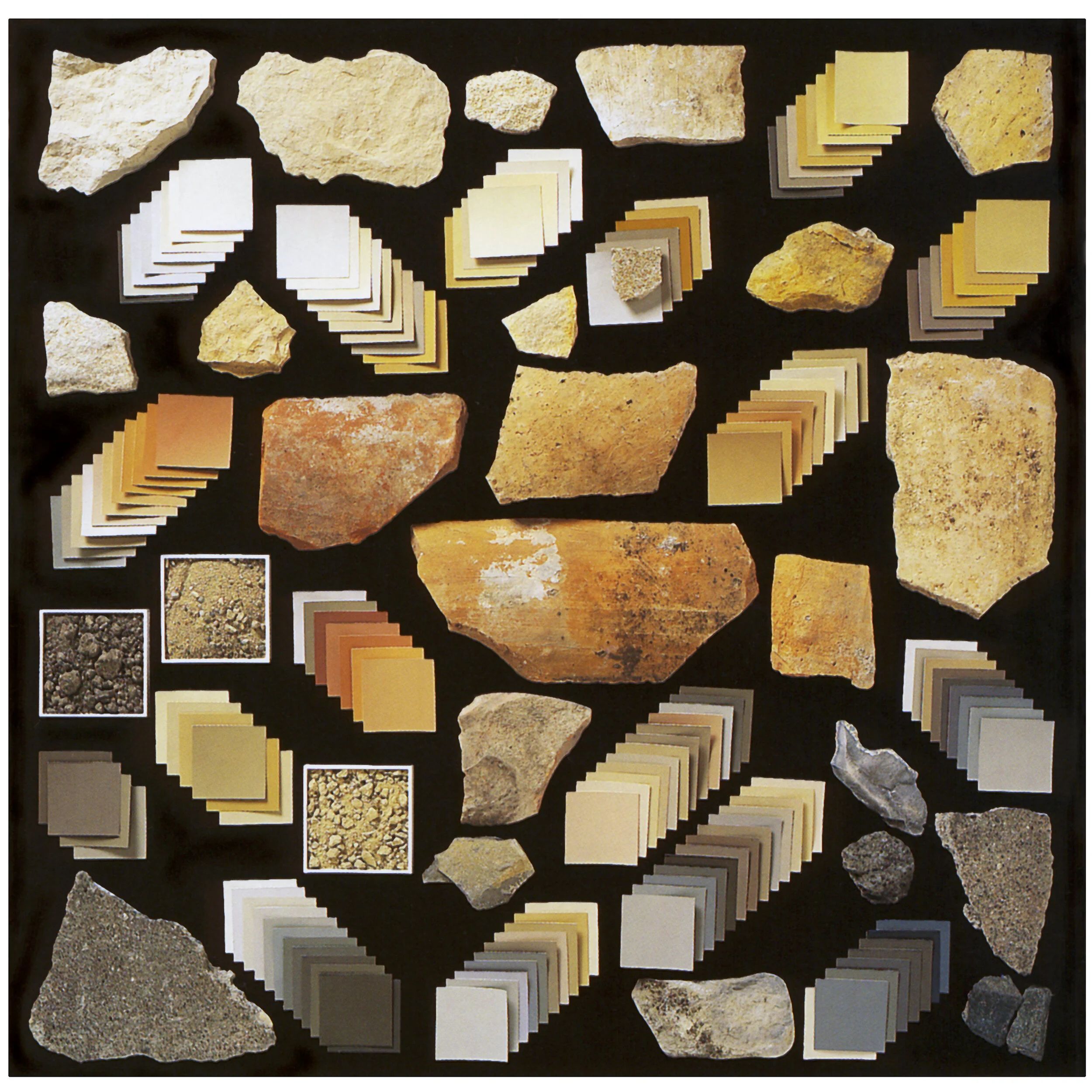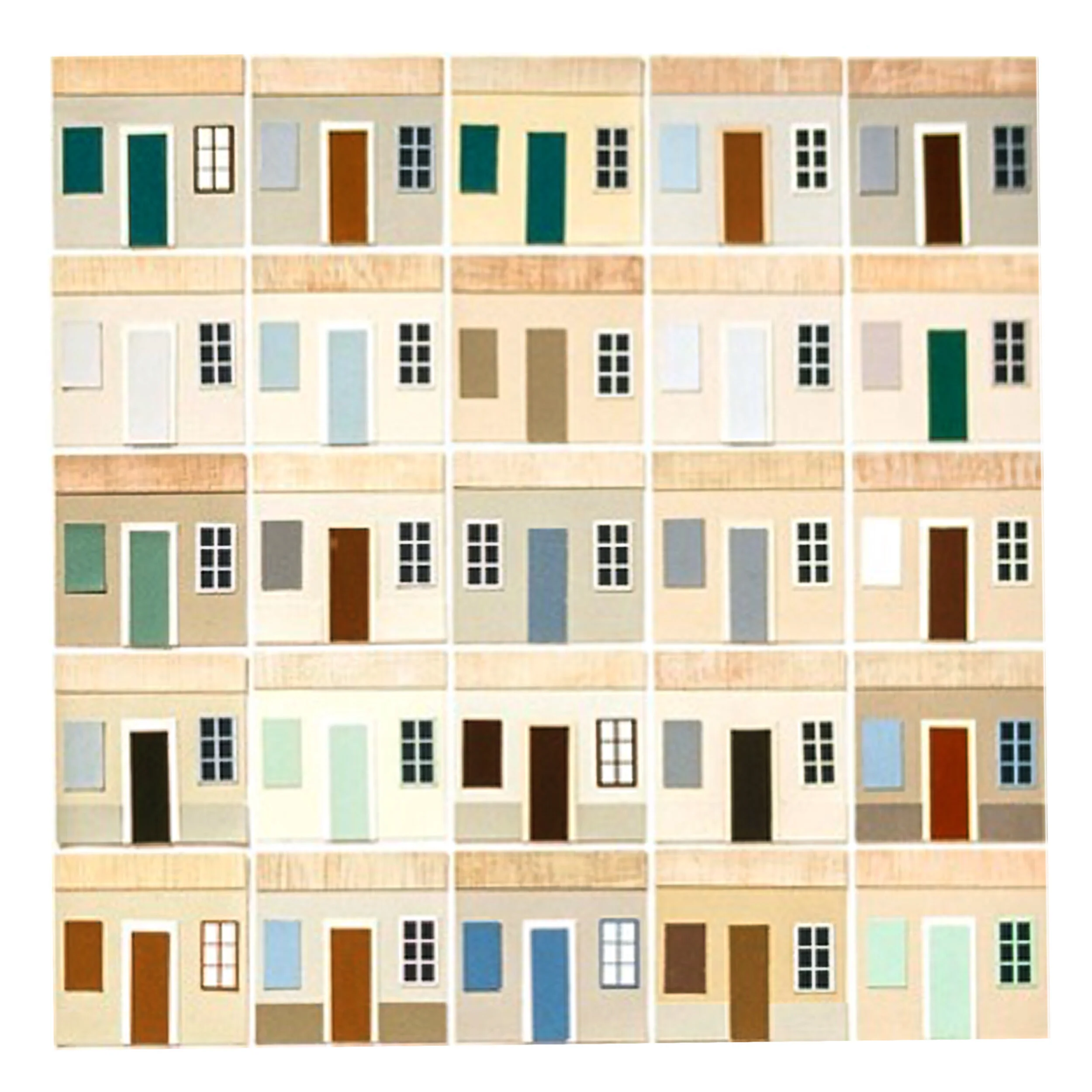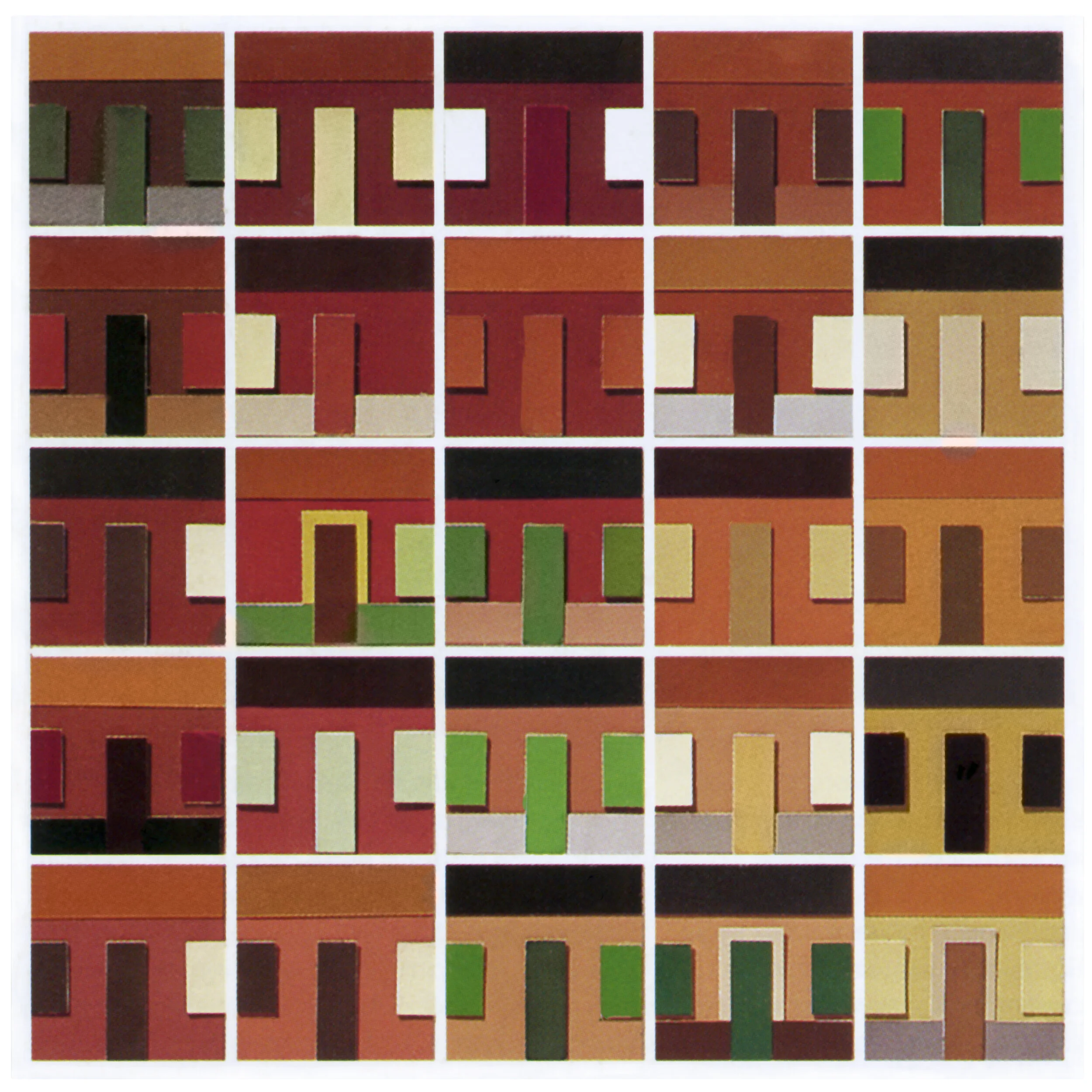Concept and methodology
In 1965, after taking the role of Artistic Director at Peintures Gauthier, Lenclos undertook a detailed analysis of the vernacular colours used in housing across the regions of France. The objective was to produce a range of exterior paints that corresponded to the traditional colours used in each region.
In carrying out this research he developed an original method of analysis, presented in the form of colour synthesis charts. Each of these charts was composed of 25 vignettes representing a simplified composition of the colours found in each house or building, including walls, doors, shutters, windows, framework and structural elements. This method of presenting research created a consistent, modular system that allowed easy comparison of the different vignettes.
The colour synthesis charts shown here give a colour identity to each location studied. From his experience in Japan, comparing the colours of Japanese and French housing, Lenclos deduced that each geographic region engendered in its inhabitants a particular taste for the colours they made for their housing, and formed part of their identity. This theory was confirmed by his research across the four corners of the world and in 1965 it was the origin of Lenclos’s geography of colour concept. These studies were published in the books Colours of France in 1982, Colours of Europe in 1995, Colours of the World in 2001 and Colours of the Mediterranean in 2016, published by Éditions du Moniteur.
The geography of colour concept went on to form the basis of a range work, in particular the marketing of consumer products. Lenclos’s research created a new approach to colour design which, by referring to populations in a specific location and era, much like a scientific method, has opened fresh horizons on the subject. Today, this research and design approach is known and applied worldwide.
Photo: poster for the exhibition Geography of Colour at the Centre de Création Industrielle, Musée National d'Art Moderne, Centre Pompidou, Paris in 1977. These 20 samples of earth from locations across France symbolise the colours of traditional housing that has been built from local materials. In these particular samples the natural colour pigments come from iron oxides.
↑ Jean-Philippe and Dominique Lenclos began their research in 1965 and their work was featured in various architecture and interior design magazines from 1970. In 1982 their first book, The Colours of France, was published by Editions du Moniteur.
↑ Having grown up in the north of France, Lenclos was used to the reds and oranges of the terracotta bricks and tiles used in this region.
↑ The geology of much of France consists of sedimentary rock. The level of iron oxide in clay made from this rock causes the tiles turn to reds and oranges when fired.
↑ In 1961, when he discovered the greys, blacks and whites used in traditional Japanese housing, Lenclos began to see the different chromatic range created by materials from one country to another. And how they differed from one region, town or village to the next. It was this comparative method that gave birth to the concept geography of colour.
↑ The geology in much of Japan consists of volcanic rock. The level of iron oxide in clay made from this rock causes the tiles turn grey when fired.
↑ Method of site analysis. As part of the research for the geography of colour in France study, an analysis of the village of Conques in the region of Aveyron was carried out. An overview of the village shows a palette with two dominant colours, the grey shale of the roof tiles and the beige render of the facades. 1994
↑ A closer look at the materials reveals a richer and more elaborate vocabulary of colours. We see the tones in more detail through the textures and details of the materials.
↑ Samples are taken from a variety of materials on site, providing first-hand evidence of the elements that make up the architectural landscape. Often a variety of tones can be found in just one material. A copy of each colour is made with gouache paint.
↑ Where it’s not possible to take a sample of the material, we take a colour sample using swatches.
↑ Analyses of sites in France, Europe and across the world. The evidence from this research, which began in 1965 in France, showed a vernacular of colour specific to the housing in each region. Studies were carried out in countries across Europe and later in other continents. A representative selection of the summary charts from these books is shown here, each one showing the colour synthesis of a location. Photo: these site samples of different building materials provide original examples of the colours found in a location. These are reproduced in the studio as colour samples using gouache paint, and sometimes the shades of colour found correspond directly to those found in industrial paint swatches.
↑ Drawings can express a broader range of elements than photographs, and are therefore a more efficient means of noting the key characteristics of a site. The range of colours found can be seen here in the samples and swatches.
↑ Analysis and copying of the samples is done at the studio to build up a study of the site.
↑ The copied colours are brought together in a summary chart, composed of 25 vignettes. This chart shows a general colour synthesis of roofs and facades from 25 houses in the village of Conques.
↑ Summary chart of 25 houses in Conques, showing a colour synthesis of doors, shutters, windows, substructure, framework and half-timbering.
↑ Summary chart showing the final site analysis of Conques. This chart brings together the detailed synthesis and general synthesis into a single chart. It captures a particular moment in the colour history and geography of this location. 1994
↑ Example colour chart for the county of Viviers.
↑ Example colour chart for the town of Lille.
↑ Example colour chart for the county of Chinon.
↑ Example colour chart for the region of Brittany.
